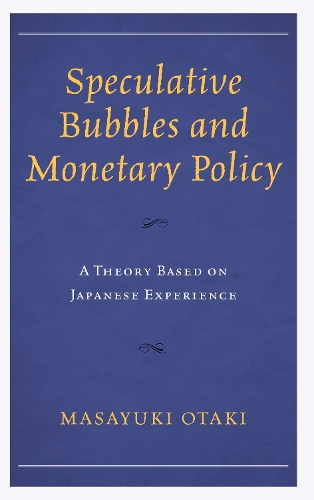
Speculative Bubbles and Monetary Policy: A Theory Based on Japanese Experience
(Hardback)
Publishing Details
Speculative Bubbles and Monetary Policy: A Theory Based on Japanese Experience
By (Author) Masayuki Otaki
Bloomsbury Publishing PLC
Lexington Books
17th December 2018
United States
Classifications
Professional and Scholarly
Non Fiction
Political economy
Business and Management
Asian history
332.632280952
Physical Properties
Hardback
140
Width 154mm, Height 236mm, Spine 16mm
358g
Description
Speculative Bubbles and Monetary Policy works at the intersection of economic theory history. While the consistent and penetrating perspective of theory is necessary for interpreting economic history, existing macroeconomic theories are fragile an ineffective at narrating an economic history that covers a relatively long period. Such fragility comes from arbitrariness in deployed economic theory as well as structural changes within an economy. This book presents a Keynesian theory with a rigorous dynamic microeconomic foundation that entirely differs from new Keynesian theory and applies it to the Japanese economic history from the 1980s to 2010s. It considers two primary incidents in the countrys economic history: the bubble boom from the late 1980s to the early 1990s, and the countrys immersion in neoliberalism at the turn of the century.
Reviews
Ohtaki, one of the most distinguished macro-economists in contemporary Japan, provides a penetrating analysis in the macro-economic history of Japan during the 1980s and 2010s. Combining monetary theory related to speculative bubbles, quantitative easing monetary policy and disinflation process with supply-side analysis of labor productivity stagnation, the book presents a concise overview, and mutually cohesive and consistent theoretical models for the history. The plight of the Japanese economy after the Asian crisis is analyzed with the background of a careful search for the seeds of disaster sowed during the prosperous and babbly 1980s. Most fascinating is the analysis of the effects of structural reform policy of Koizumi regime on the micro-structure of employment system. Ohtaki condemns the policy relying on neoliberal thought in that it decomposed the Japanese firm from an organic entity into a simple assembly of production resources, destroying efficiency of Japanese firms based on information processing skills. Market failures in the late 1980s was replaced by policy failures in the early 2000s. There is no doubt that this book is a most valuable contribution to the analysis of the macroeconomic history of Japan that appeared during the past twenty years and is recommended to both Japanese and overseas readers. -- Juro Teranishi, Hitotsubashi University
For the last two decades, many Japanese economists have faced a very complicated and headachy question why the Japanese economy has been experiencing both stagnancy of real economy and price levels in spite of the quite aggressive expansion of money supply by the Bank of Japan. This Otakis book is the very insightful trial to give an answer to this question. I believe his trial achieve one insightful answer based on rather simple but insightful thinking. According to his book, a relatively simple macroeconomic model based on the over-rapping generation hypothesis can be utilized to show why Japan has experienced the bubble economy in the late 1980s and after that (more explicitly after the Asian Crisis of 1997) the stagnancy of price. Although his model is similar to that Professor Lucas developed in 1977, but Otaki shows his model are more expansive than Lucas one in the sense that his model shows the price stagnancy of macroeconomic situation actually Japan has experienced for the last two decades. More specifically, his model shows that the monetarists continuing rise of price level is rather rare than the stagnant price such as we have really experienced during the last two decades. We can agree with this conclusion of his model. As I have said, his model is well organized to explain the recent macroeconomic situation we have actually experienced over the two decades in Japan. But, as he suggests, other many countries such as the United States have been experiencing similar economic stagflation as well, and Otakis model is also applicable to them. I welcome this Otakis model which is well applicable to understand the recent worldwide head-aching difficulty of deflation. -- Akiyoshi Horiuchi, University of Tokyo
Author Bio
Masayuki Otaki (19572018) was professor of economics at the University of Tokyo. He completed this book shortly before passing.
